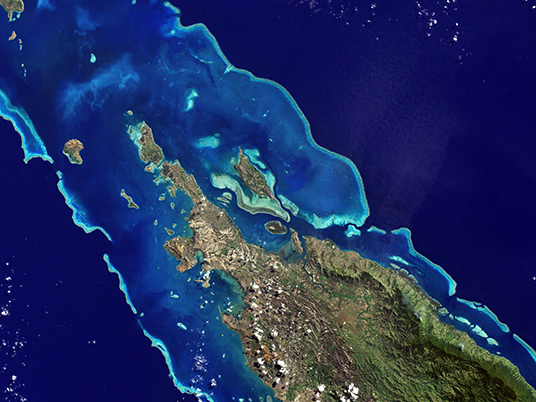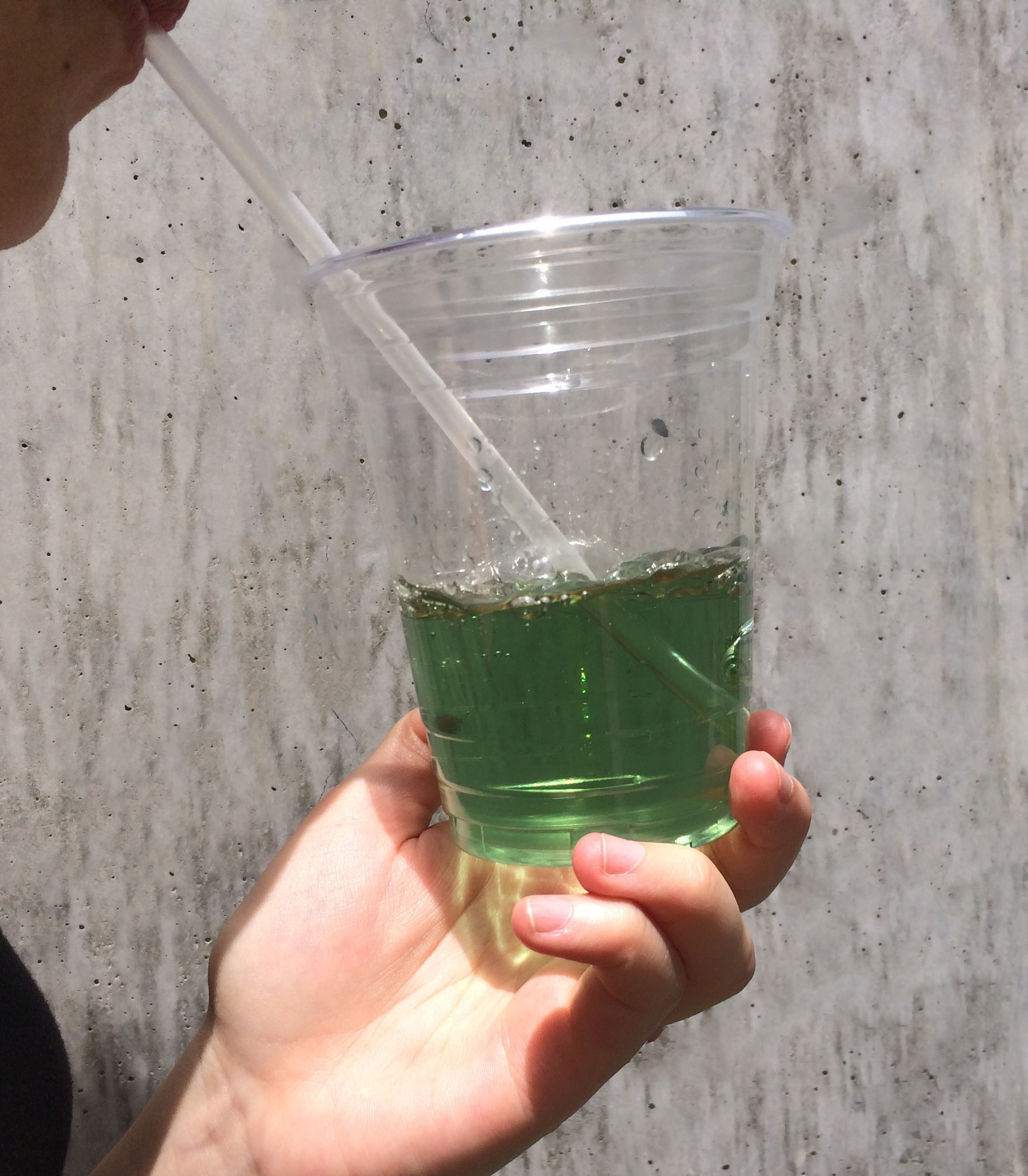Ask NASA Climate | May 6, 2014, 15:13 PDT
Blowing your mind with CO2 bubbles

Île Balabio, off the northern tip of Grande Terra, New Caledonia, is an archipelago that contains the world’s third-largest coral reef structure. This image was captured by the Enhanced Thematic Mapper Plus on NASA’s Landsat 7 satellite on May 10, 2001.
You might accuse me of going overboard with posts about Earth Day, but this will be the very last one, I promise (until next year, of course). But trust me, you’ll probably find what happened when I was at an Earth Day fair as interesting as I did. At least one person found it downright mind-blowing.
NASA had a large presence at the Walt Disney Studios' Earth Day fair. We brought out a telescope, some model satellites, banners, posters and screens of all sizes to demo three of our apps. We also performed a couple of live science demos, because if you really want to understand science, nothing beats seeing it in action.
I like basic demos—the dorkier the better. They provide an opportunity to have some fun and usually deliver a big “wow,” too. The point of this particular demo was to show that adding carbon dioxide to water makes it more acidic, which is what's happening to the global ocean. Some of the extra CO2 we're adding to the atmosphere by burning fossil fuels such as coal, oil and natural gas gets absorbed by the ocean. And scientists around the world have observed that our oceans are becoming more acidic as a result. This is bad news for many sea creatures, including coral reefs, which are particularly sensitive to changes in ocean acidity.
To perform this demo, I poured a couple ounces of water into a cup and added a squirt of bromothymol blue, a pH indicator. It’s blue in a neutral solution and starts to turn greenish-yellow as the liquid becomes acidic, then yellow if the liquid becomes even more acidic.At the fair, participants added CO2 to the water by blowing through a straw. On planet Earth, the relatively small amount of carbon dioxide that animals exhale has been balanced by plants' carbon dioxide intake for many thousands of years. So our breath does not contribute to global climate change in the same way that the much, much larger amount of carbon dioxide that comes from burning fossil fuels does. But there’s enough CO2 in an average exhale to make a few ounces of water in a cup more acidic.
So there I was, filling the cups and chatting away to visitors at the fair. One woman paused after blowing into her cup of water, which had turned from blue to light green. She looked up at me over her straw and asked, “When will it turn back to blue again? Will it take about ten minutes or so?”
“No," I replied. " The water is more acidic now. It does not go back.”
She looked stunned—eyes wide, mouth open. She understood what climate change really means. Standing there at the NASA booth, with a dorky cup of slightly acidic light green water and a straw in her hand, she had internalized the enormity of the global climate change problem. She understood how our behavior has long-term consequences.
No, it does not go back. Not in our lifetime, not for thousands of years.
Thank you for your comments.
Laura

